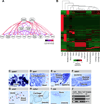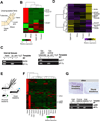A Tissue-Mapped Axolotl De Novo Transcriptome Enables Identification of Limb Regeneration Factors
- PMID: 28099853
- PMCID: PMC5419050
- DOI: 10.1016/j.celrep.2016.12.063
A Tissue-Mapped Axolotl De Novo Transcriptome Enables Identification of Limb Regeneration Factors
Abstract
Mammals have extremely limited regenerative capabilities; however, axolotls are profoundly regenerative and can replace entire limbs. The mechanisms underlying limb regeneration remain poorly understood, partly because the enormous and incompletely sequenced genomes of axolotls have hindered the study of genes facilitating regeneration. We assembled and annotated a de novo transcriptome using RNA-sequencing profiles for a broad spectrum of tissues that is estimated to have near-complete sequence information for 88% of axolotl genes. We devised expression analyses that identified the axolotl orthologs of cirbp and kazald1 as highly expressed and enriched in blastemas. Using morpholino anti-sense oligonucleotides, we find evidence that cirbp plays a cytoprotective role during limb regeneration whereas manipulation of kazald1 expression disrupts regeneration. Our transcriptome and annotation resources greatly complement previous transcriptomic studies and will be a valuable resource for future research in regenerative biology.
Keywords: Trinity; Trinotate; axolotl; blastema; cirbp; expression analysis; kazald1; limb; regeneration; transcriptome.
Copyright © 2017 The Author(s). Published by Elsevier Inc. All rights reserved.
Figures






References
-
- Abdullayev I, Kirkham M, Bjorklund AK, Simon A, Sandberg R. A reference transcriptome and inferred proteome for the salamander Notophthalmus viridescens. Exp Cell Res. 2013;319:1187–1197. - PubMed
-
- Beauchemin M, Del Rio-Tsonis K, Tsonis PA, Tremblay M, Savard P. Graded expression of Emx-2 in the adult newt limb and its corresponding regeneration blastema. J Mol Biol. 1998;279:501–511. - PubMed
-
- Boeckmann B, Blatter MC, Famiglietti L, Hinz U, Lane L, Roechert B, Bairoch A. Protein variety and functional diversity: Swiss-Prot annotation in its biological context. Comptes rendus biologies. 2005;328:882–899. - PubMed
MeSH terms
Substances
Grants and funding
LinkOut - more resources
Full Text Sources
Other Literature Sources
Molecular Biology Databases

